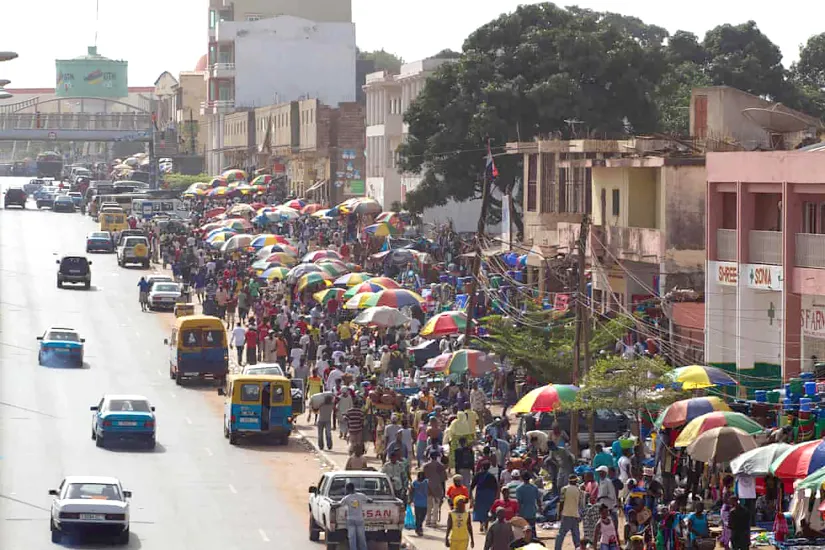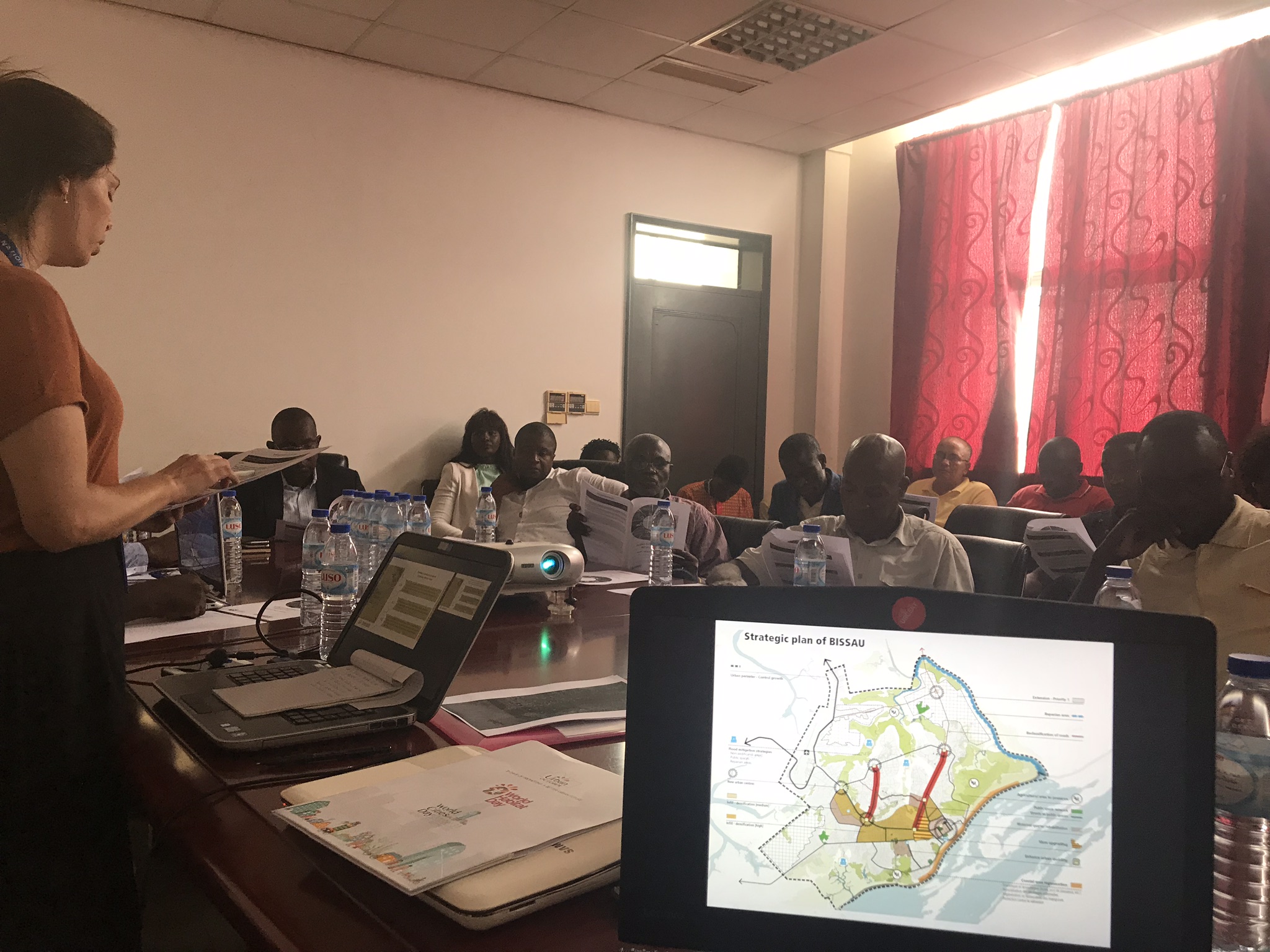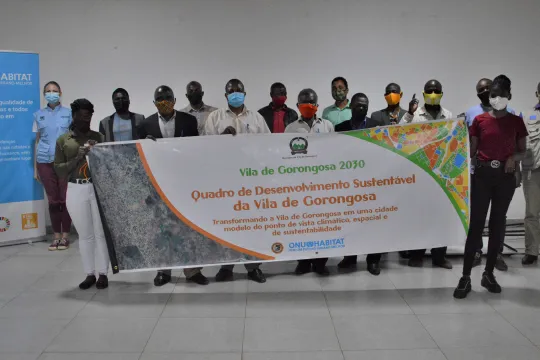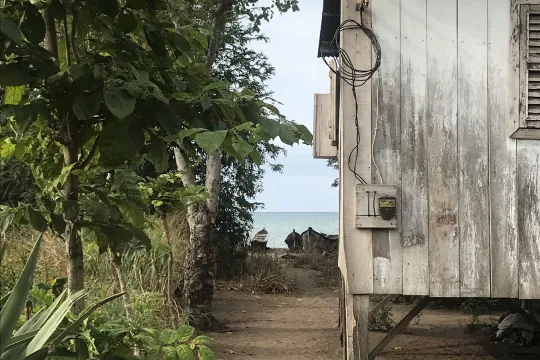
Bandim Street, Bissau, Guinea Bissau © rebecca blackwell AP
Introduction
Approximately 43.4% of Guineans live in urban areas (UNDESA, 2018). In addition to Bissau, the country's largest cities include Gabu, Bafatá, Bissorã and Bigene; together they have a total of 260,000 inhabitants (INE,2009). All urban centres in the country suffer from unplanned rapid growth, lack of land use planning, inadequate land allocation policies, lack of property cadaster system for tax collection, weak technical and institutional capacity, and lack of financial resources to provide adequate services at the local level, such as drainage systems and sewage collection facilities. Particularly for countries like Guinea-Bissau, urban-rural linkages play a complementary role in development. Urban areas require environmental products and services from rural areas, while rural areas benefit from urban demand and specialised services, hence the need for integrated planning. Based on that, the main objective of this project is to provide Bissau with a Strategic Spatial Development Plan for 2030 that promotes inclusive, resilient, inclusive, resilient, and sustainable urban development.
Context and background
The Autonomous Sector of Bissau (SAB) represents more than a quarter of the national population and concentrates an increasing number of people, which makes the city a significant hub for the sustainable development of the country. The role of local governments in combining public and private initiatives for the generation of wealth and employment generation at the local level is made explicit in several national plans, which also cite urbanisation as one of the five pillars of Guinea-Bissau's strategic development plan. The city of Bissau has not had a formal urban plan approved since the mid-1990s. As a result, there is a proliferation of informal settlements without access to water, sanitation, and energy, among other public services and facilities.
Based on this background, the SAB, with technical assistance from UN-Habitat, brought together the main relevant actors to create a common and shared vision for the sustainable development of the city, Bissau 2030, which aims to guide the development towards a more inclusive, sustainable and resilient future.
Plan and process
The planning process comprised 5 phases:
- Preliminary work - Analysis
- Participatory Workshop
- Study and Planning
- Validation Workshop
- Submission of Final Report
Firstly, the planning process focused on a preliminary analysis and review of existing plans and planning structures and frameworks, focusing on the New Urban Agenda (NUA) and on how to achieve the Sustainable Development Goals (SDGs) at city scale. This process was done through a participatory workshop and field data collection.
The technical team consolidated all this gathered information into a diagnostic and then the 2030 strategic plan was developed and discussed with city representatives and relevant stakeholders. Before the final report submission, a final validating workshop occurred for a more practical discussion in which the technical team presented the final results of the Strategic Plan for Sustainable Development for Bissau.

Use of Our City Plans
The use of Our City Plan focused on the preliminary local assessment in which the identification of the city's main challenges and needs were laid out in a deeper understanding of existing urban conditions and resources, growth patterns, possible areas of urban expansion, environmental risks and deficiencies of the road network. It served as a baseline for spatial planning work and to further inform the integrated planning process.
Through the co-development between UN-Habitat and the Bissau City Council, it was possible to adapt Our City Plans methodology, considering the available resources and capacities of the context which in this case were most applicable to the need of a quick assessment of the existing conditions, considering legal, institutional, economic, and planning aspects.
Results
The plan is in the stage of operationalization. The plan provides a great opportunity to further enhance data ownership, update and maintenance, ultimately helping to effectively support urban policy/strategy development and monitor specific city-wide interventions in the longer term. Strategic urban planning can be used to address specific concerns or a wider range of issues, it involves cooperation at the organisational, local and regional levels, and has the potential to mobilise resources and coordinate activities on a large scale.
In April 2022, Bissau 2030 was used as a guideline for a proposal in coordination with partners of the civil societies in the scope of land management for urban gardening.

